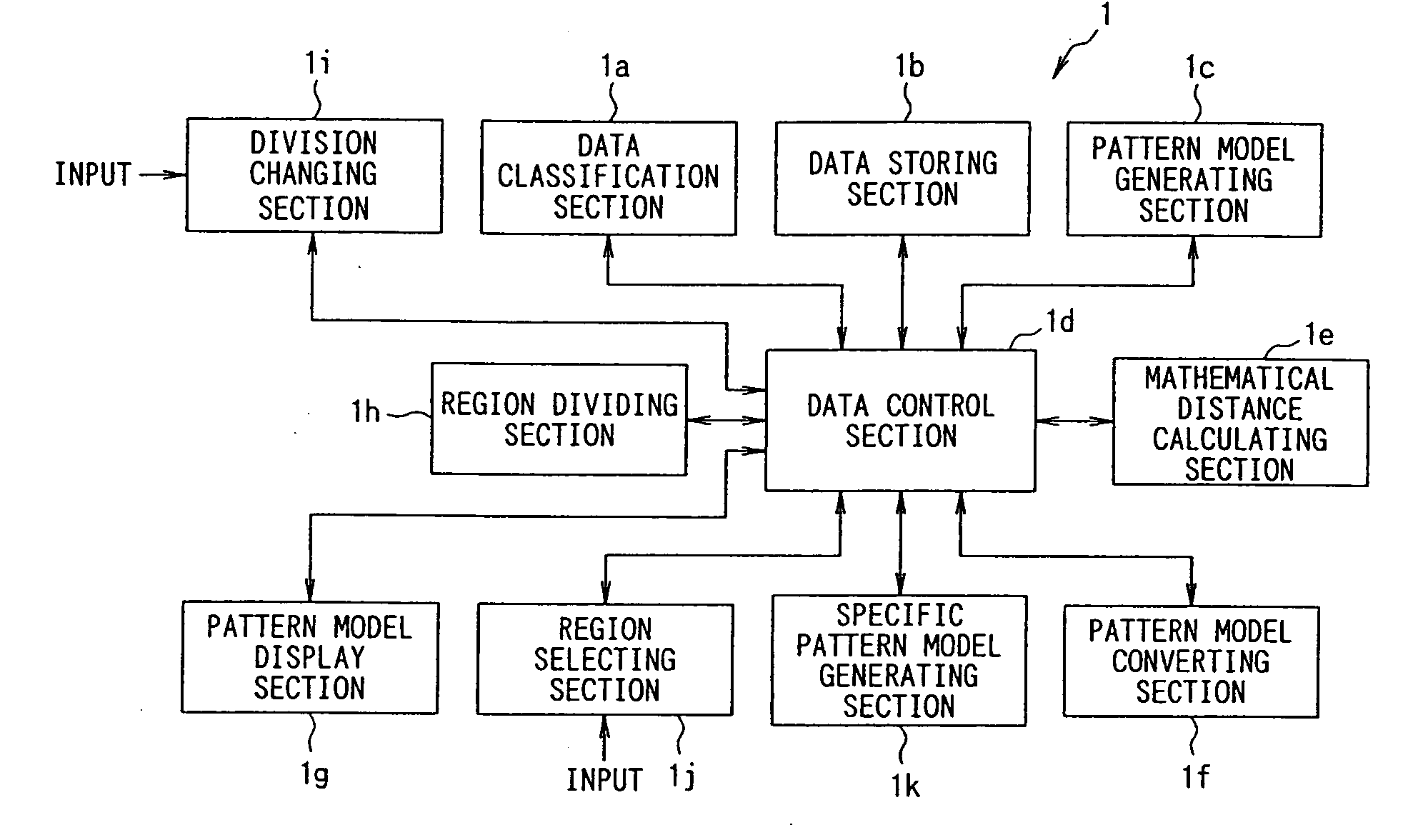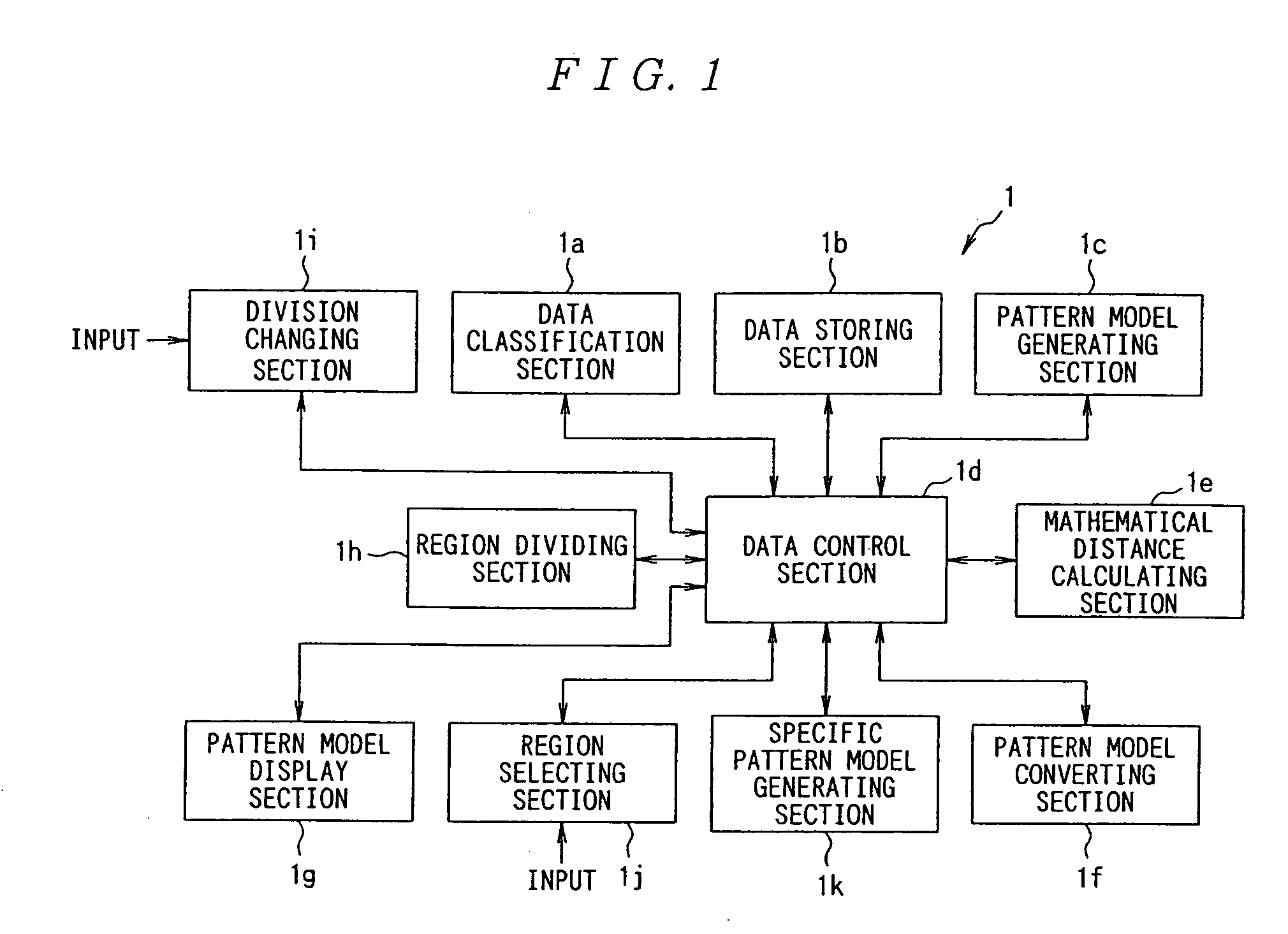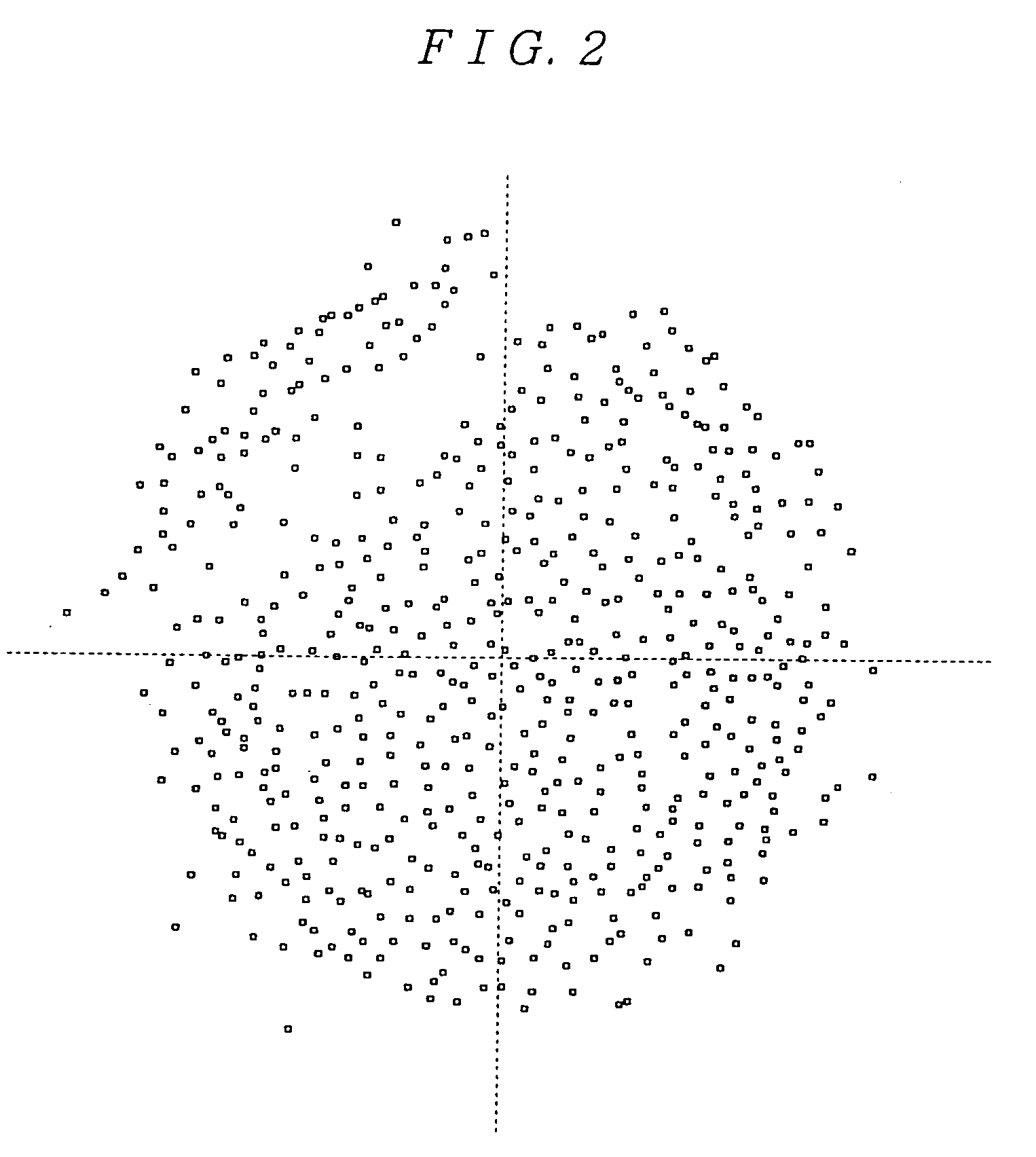Data Process unit and data process unit control program
a data process and control program technology, applied in the field of pattern model generation, can solve the problems of limited recognition rate, large calculation time, difficult to visually represent interrelationship among a plurality of acoustic models, etc., and achieve the effect of high valu
- Summary
- Abstract
- Description
- Claims
- Application Information
AI Technical Summary
Benefits of technology
Problems solved by technology
Method used
Image
Examples
first embodiment
[0529]A first embodiment of the present invention will be described below with reference to drawings. FIGS. 1 to 14 are diagrams showing a data process unit according to the first embodiment of the present invention.
[0530]First, a configuration of a data process unit according to the present invention will be described with reference to FIG. 1. FIG. 1 is a block diagram showing a configuration of a data process unit 1 according to the present invention.
[0531]The data process unit 1 comprises a data classification section 1a, data storing section 1b, pattern model generating section 1c, data control section 1d, mathematical distance calculating section 1e, pattern model converting section 1f, pattern model display section 1g, region dividing section 1h, division changing section 1i, region selecting section 1j, and specific pattern model generating section 1k.
[0532]The data classification section 1a classifies an unspecified number of data on a plurality of objects into groups based...
first example
[0595]Now, an example of how the data process unit 1 generated specific acoustic models will be described with reference to drawings. FIGS. 13 and 14 are diagrams showing this example. FIG. 13 is a diagram showing a display of acoustic-model-compatible low dimensional vectors according to this example while FIG. 14 is a diagram showing recognition rates of specific acoustic models generated for different segment regions and acoustic models generated for a whole region.
[0596]According to this example, a plurality of speakers were presented with five speech styles—“normally (in the usual tone of the target speaker),”“rapidly,”“in a loud voice,”“distinctly (pronounce each kana distinctly),” and “in a small voice”—and asked to utter the same Japanese words. Since the speakers were not forced to utter sounds faithfully according to the presented speech styles, the actual speech styles did not necessarily agree with the presented speech styles. Under such circumstances, there is no guaran...
second example
[0614]Now, with reference to FIGS. 15 and 16, description will be given of an example in which an acoustic model created for each combination of speech styles was projected two-dimensionally according to the present invention. FIG. 15 is a diagram showing speech styles while FIG. 16 is a diagram showing an example in which an acoustic model created for each combination of speech styles in FIG. 15 is projected two-dimensionally.
[0615]In this example, some of speech styles shown in Table 1 were specified and 145 male speakers were asked to utter lists of 176 words out of 5240 words.
[0616]Seven speech styles shown in FIG. 15 were used when recording speech data, including normally (read the word list at a usual speed), rapidly (read the word list faster than usual), in a high voice (read the word list in a higher than normal voice), in a small voice (read the word list in such a way as not to be heard even by people nearby), in a loud voice (read the word list loudly so that it can be ...
PUM
 Login to View More
Login to View More Abstract
Description
Claims
Application Information
 Login to View More
Login to View More - R&D
- Intellectual Property
- Life Sciences
- Materials
- Tech Scout
- Unparalleled Data Quality
- Higher Quality Content
- 60% Fewer Hallucinations
Browse by: Latest US Patents, China's latest patents, Technical Efficacy Thesaurus, Application Domain, Technology Topic, Popular Technical Reports.
© 2025 PatSnap. All rights reserved.Legal|Privacy policy|Modern Slavery Act Transparency Statement|Sitemap|About US| Contact US: help@patsnap.com



